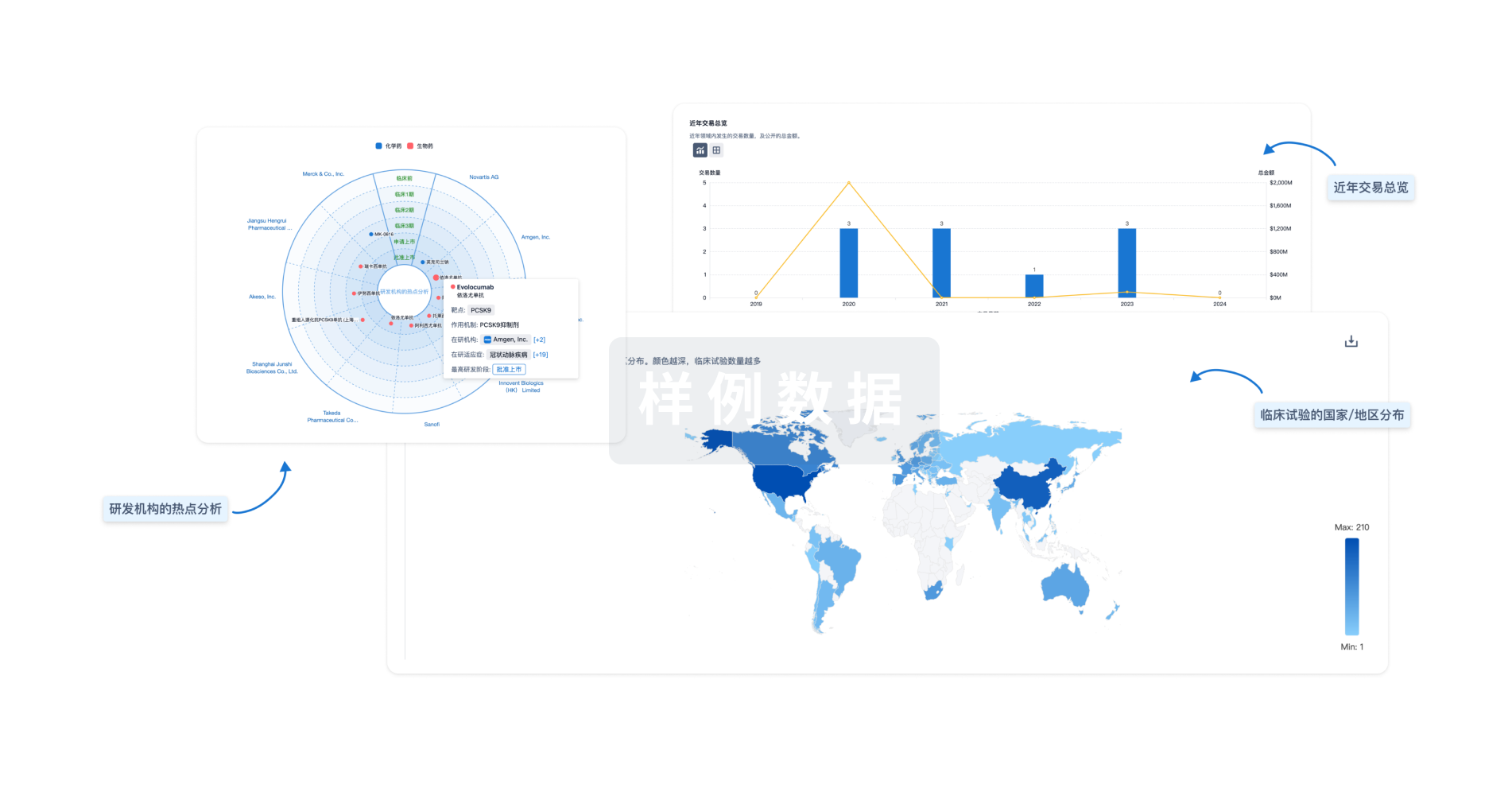预约演示
更新于:2025-05-07
MerTK x VEGFR2 x c-Met x AXL
更新于:2025-05-07
关联
2
项与 MerTK x VEGFR2 x c-Met x AXL 相关的药物作用机制 AXL抑制剂 [+4] |
在研机构 |
原研机构 |
最高研发阶段临床1期 |
首次获批国家/地区- |
首次获批日期1800-01-20 |
作用机制 AXL抑制剂 [+3] |
在研机构 |
原研机构 |
在研适应症 |
非在研适应症- |
最高研发阶段临床前 |
首次获批国家/地区- |
首次获批日期1800-01-20 |
12
项与 MerTK x VEGFR2 x c-Met x AXL 相关的临床试验NCT04992858
A Phase II Study of the Ningetinib in Advanced NSCLC With MET Exon 14 Skipping Mutations
This is a phase II, Single-arm,Open-label Study evaluating the safety and efficacy of CT053PTSA in Advanced Solid Tumors With MET Exon 14 Skipping Mutations
开始日期2022-11-27 |
申办/合作机构 |
NCT04601610
An Open, Multi-center, Ib/II Clinical Trial of KN046 Combined With Ningatinib in the Treatment of Advanced Hepatocellular Carcinoma
This study is an open, multi-center clinical trial, the purpose is to study the safety and preliminary efficacy of KN046 combined with Ningatinib in subjects with advanced hepatocellular carcinoma.
开始日期2021-06-07 |
申办/合作机构  江苏康宁杰瑞生物制药有限公司 江苏康宁杰瑞生物制药有限公司 [+1] |
100 项与 MerTK x VEGFR2 x c-Met x AXL 相关的临床结果
登录后查看更多信息
100 项与 MerTK x VEGFR2 x c-Met x AXL 相关的转化医学
登录后查看更多信息
0 项与 MerTK x VEGFR2 x c-Met x AXL 相关的专利(医药)
登录后查看更多信息
6
项与 MerTK x VEGFR2 x c-Met x AXL 相关的文献(医药)2023-02-01·Molecular Cancer Therapeutics
Preclinical Characterization of XL092, a Novel Receptor Tyrosine Kinase Inhibitor of MET, VEGFR2, AXL, and MER
Article
作者: Serrill, Jeffrey ; Wang, Yong ; Xu, Wei ; Goon, Levina ; Wu, Sharon ; Leong, Kevin G. ; Balayan, Joan ; Johnson, Eric N. ; Jiang, Faming ; Lamb, Peter ; Hsu, Jeff ; Yu, Peiwen ; Chong, Colin ; Bannen, Lynne ; Lorenzana, Grachelle ; Yun, Theodore J.
2020-05-20·Journal of Clinical Oncology
A phase Ib study of a novel c-MET, AXL and VEGFR-2 inhibitor ningetinib and gefitinib combination therapy in Chinese EGFR-TKI resistant NSCLC with T790M negative.
作者: Xi, Ning ; Xie, Bo ; Zhang, Li ; Kang, Ning ; Zhao, Hongyun ; Fang, Wenfeng ; Fang, Jian ; Liu, Lianke ; Feng, Guosheng ; Jiang, Yingzhi ; Ma, Yuxiang ; Lin, Xiaoyan ; Hong, Shaodong ; Zhang, Yingjun ; Ma, Haiqing ; Wu, Yanjun ; Li, Su ; Zhang, Yang ; Zeng, Shan ; Ren, Jun
2017-02-01·Clinical Cancer Research1区 · 医学
Molecular Pathways: Receptor Ectodomain Shedding in Treatment, Resistance, and Monitoring of Cancer
1区 · 医学
Review
作者: Miller, Miles A. ; Sullivan, Ryan J. ; Lauffenburger, Douglas A.
分析
对领域进行一次全面的分析。
登录
或

生物医药百科问答
全新生物医药AI Agent 覆盖科研全链路,让突破性发现快人一步
立即开始免费试用!
智慧芽新药情报库是智慧芽专为生命科学人士构建的基于AI的创新药情报平台,助您全方位提升您的研发与决策效率。
立即开始数据试用!
智慧芽新药库数据也通过智慧芽数据服务平台,以API或者数据包形式对外开放,助您更加充分利用智慧芽新药情报信息。
生物序列数据库
生物药研发创新
免费使用
化学结构数据库
小分子化药研发创新
免费使用


